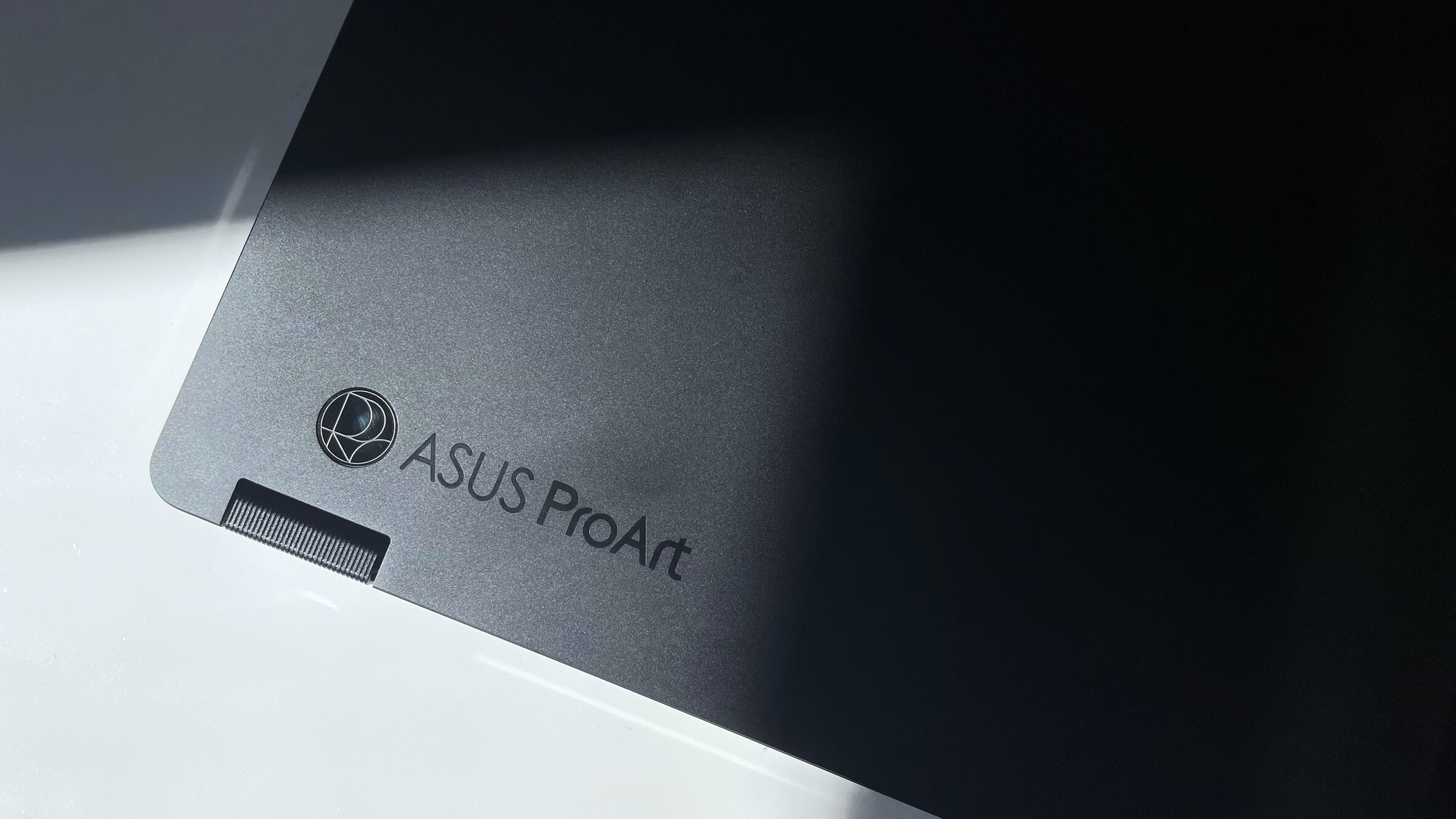
Is the Asus ProArt PX13 the new king of creator laptops, a category normally ruled by MacBooks?
The ProArt PX13 has a lot going for it, including the performance to compete with the likes of Apple and Lenovo. From a sleek, matte black design to a sharp OLED display and an Nvidia GeForce RTX 4050 GPU, the ProArt PX13 is made with creatives in mind.
The ProArt PX13 also has a potentially game changing advantage: a new AI CPU from AMD. This tiny but mighty 13-inch powerhouse is one of the first laptops to feature an AMD Ryzen AI 300 series CPU, which boasts some of the best AI performance on the market. The question is whether the Ryzen AI 9 HX 370 outperforms Intel and Qualcomm’s AI CPUs.
I spent several days using the Asus ProArt PX13 for everything from web browsing to gaming and AI tasks. Here’s an in-depth look at my experience with this slick creator laptop and how it compares to its rivals.
Asus ProArt PX13: Specs (as reviewed)
Asus ProArt PX13: Price and configurations
The Asus ProArt PX13 comes in two configurations. The base model, which we reviewed, costs $1,699 and includes an AMD Ryzen AI 9 HX 370 CPU, an NVIDIA GeForce RTX 4050 laptop GPU, 32GB of RAM, 1TB of storage, and a 13.3-inch 2800x1800 OLED touch display.
There is another configuration available directly from Asus that costs $300 more and includes all the same specs with a more powerful GPU, the Nvidia GeForce RTX 4060, which has 8GB of VRAM (slightly higher than the 6GB included in the RTX 4050).
Asus ProArt PX13: Design

The Asus ProArt PX13 is one of my favorite laptop designs of the year. It’s matte black and minimalistic, but with some creative details that help it stand out. For example, the hinges have a glossy textured design that matches a thin border around the outer edge of the display. The chassis is thin but squared off around the edges, so it feels high-end with a bit of an industrial edge.
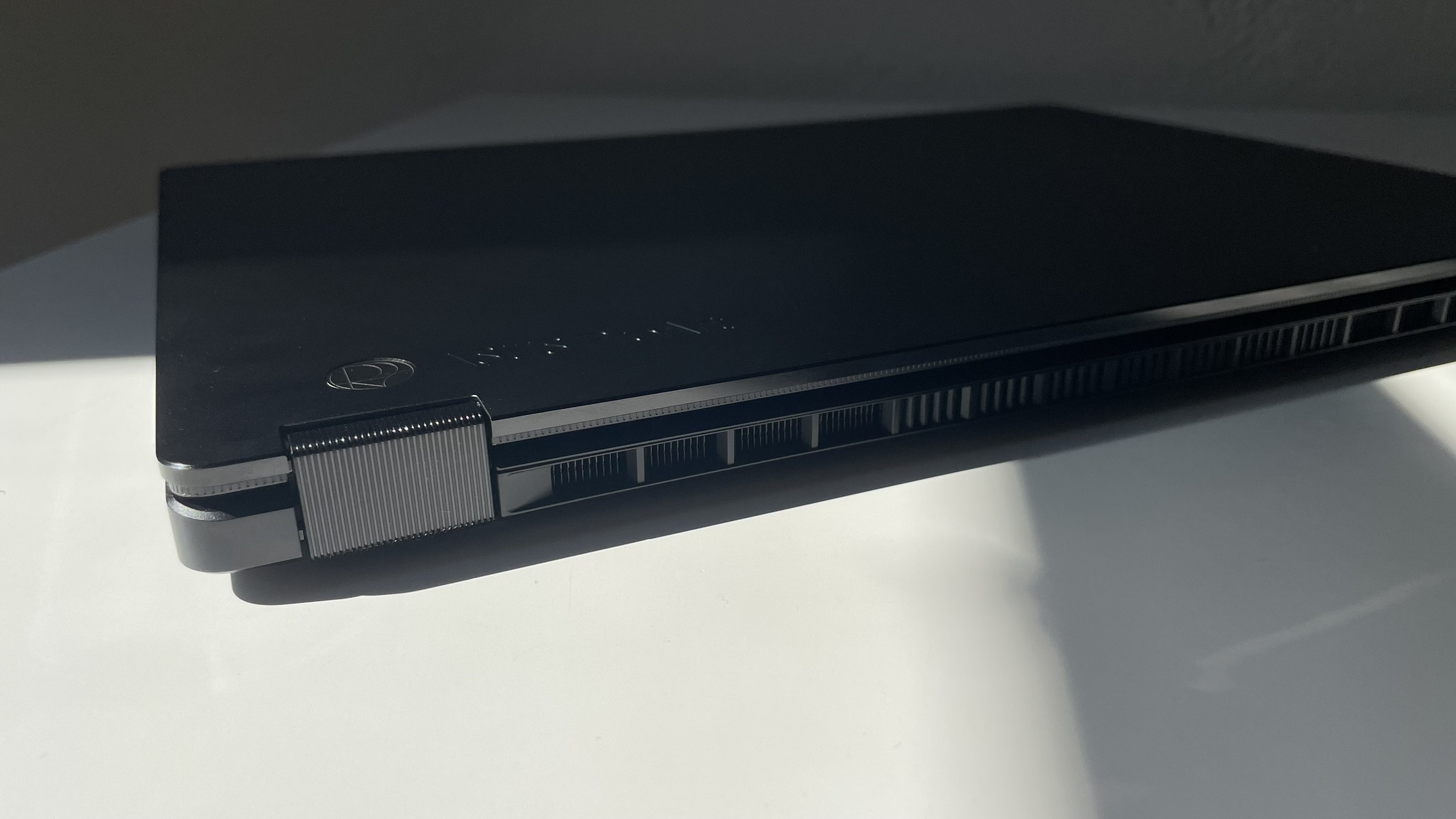
The Asus ProArt PX13 is one of my favorite laptop designs of the year.
I also noticed the PX13's wealth of vents. They’re located along the sides, rear edge, and underside of the keyboard deck. The speakers are also on the bottom of the keyboard deck in the front left and right corners.
The ProArt PX13 is a 2-in-1 laptop, so you can flip the display around and use it in tablet mode. The smaller 13-inch display is especially nice in tablet mode since you can comfortably use it in either portrait or landscape mode. If you plan to use it for drawing in tablet mode, you can pair it with an Asus Pen or another Bluetooth stylus.
Asus ProArt PX13: Ports
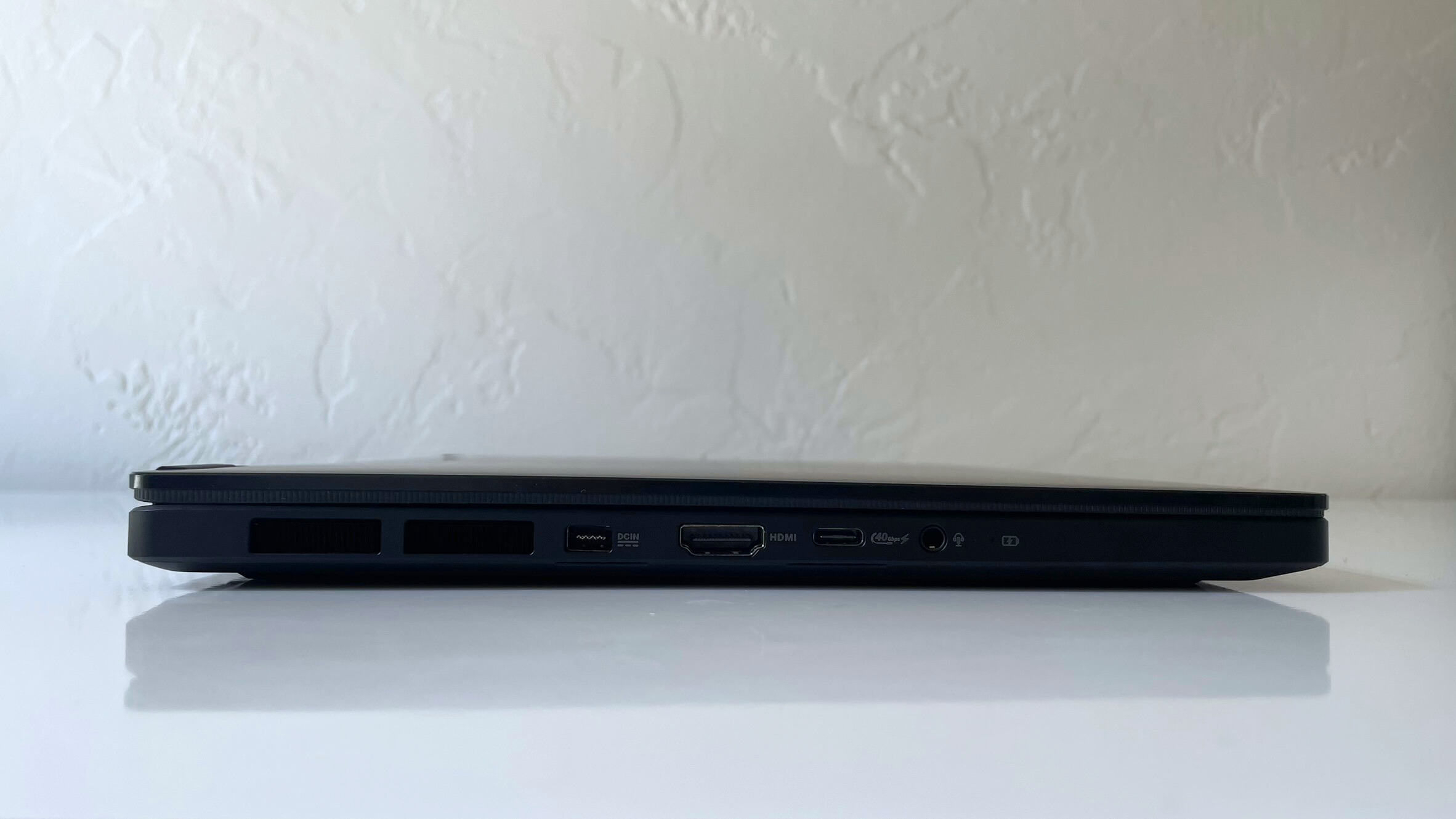
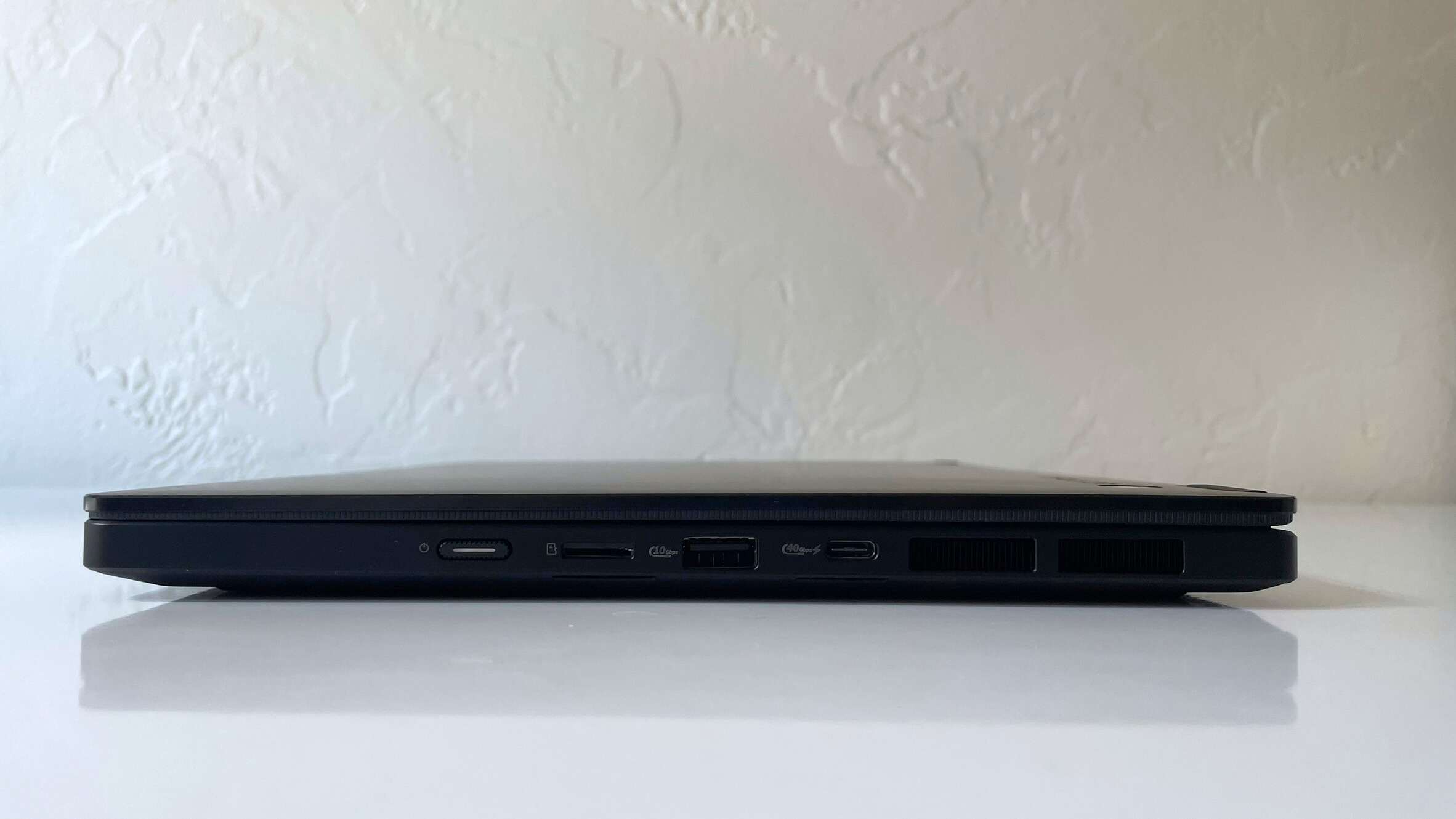
The ProArt PX13 has all the ports most creatives need. On the left side, there is a DC charging port, an HDMI port, a USB Type-C port, and a headphone jack. On the right side, there is a USB Type-C port, a USB Type-A port, and a microSD card slot.
That was enough ports for me, but a single USB Type-A port could be an issue if you have a lot of accessories to connect, like an external hard drive or a wired mouse. If that’s the case, you can always expand your port selection with a USB Type-C hub or a docking station.
Asus ProArt PX13: Display
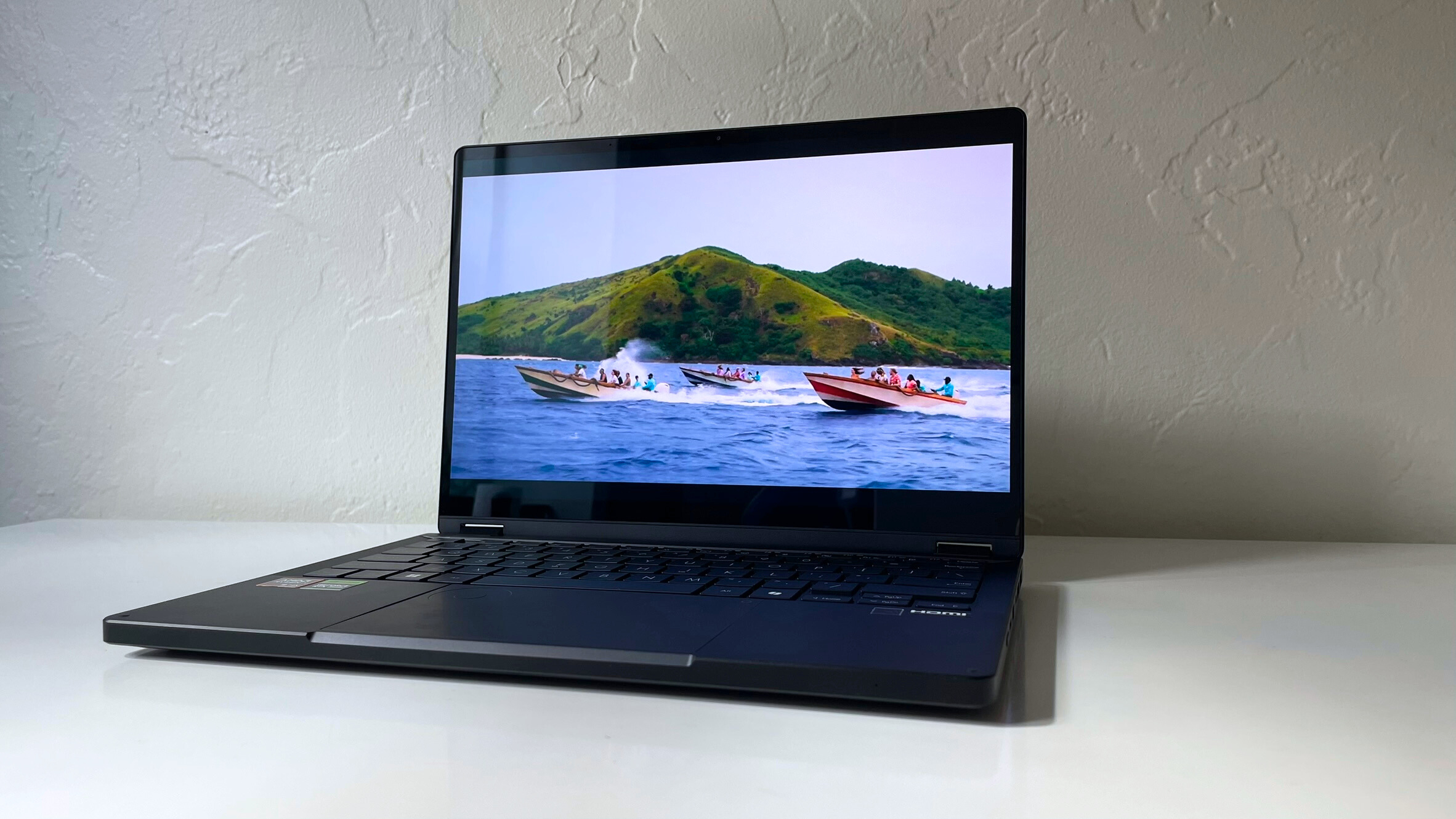
The Asus ProArt PX13 features a bright, responsive 2800x1800 OLED touch display. It looks good, but it could have done better on our display tests. It only reproduced 80 percent of the DCI-P3 color gamut, falling behind the Lenovo Yoga Pro 9i 16 Gen 9 (105.7 percent) and the Lenovo Yoga Slim 7x (155 percent), two other AI laptops geared toward creators.
Color gamut is particularly important to note since the ProArt PX13 is designed for art, design, and content creation, as its name suggests. So, I was expecting it to score higher on the color gamut test.
The PX13 averaged 350 nits of brightness, which is also a lower score than the Lenovo Yoga Pro 9i 16 Gen 9 (373 nits) and the Lenovo Yoga Slim 7x (464 nits).
It’s worth noting that the ProArt PX13 is designed for creatives, which makes it a top rival for MacBook Pro. However, we are unable to compare it to the MacBook Pro in this review due to changes in a few of our benchmark tests, including PugetBench for Adobe Creative Cloud and Geekbench ML, which was not one of Laptop Mag’s standard tests at the time we reviewed the MacBook Pro M3.
Asus ProArt PX13: Keyboard and touchpad
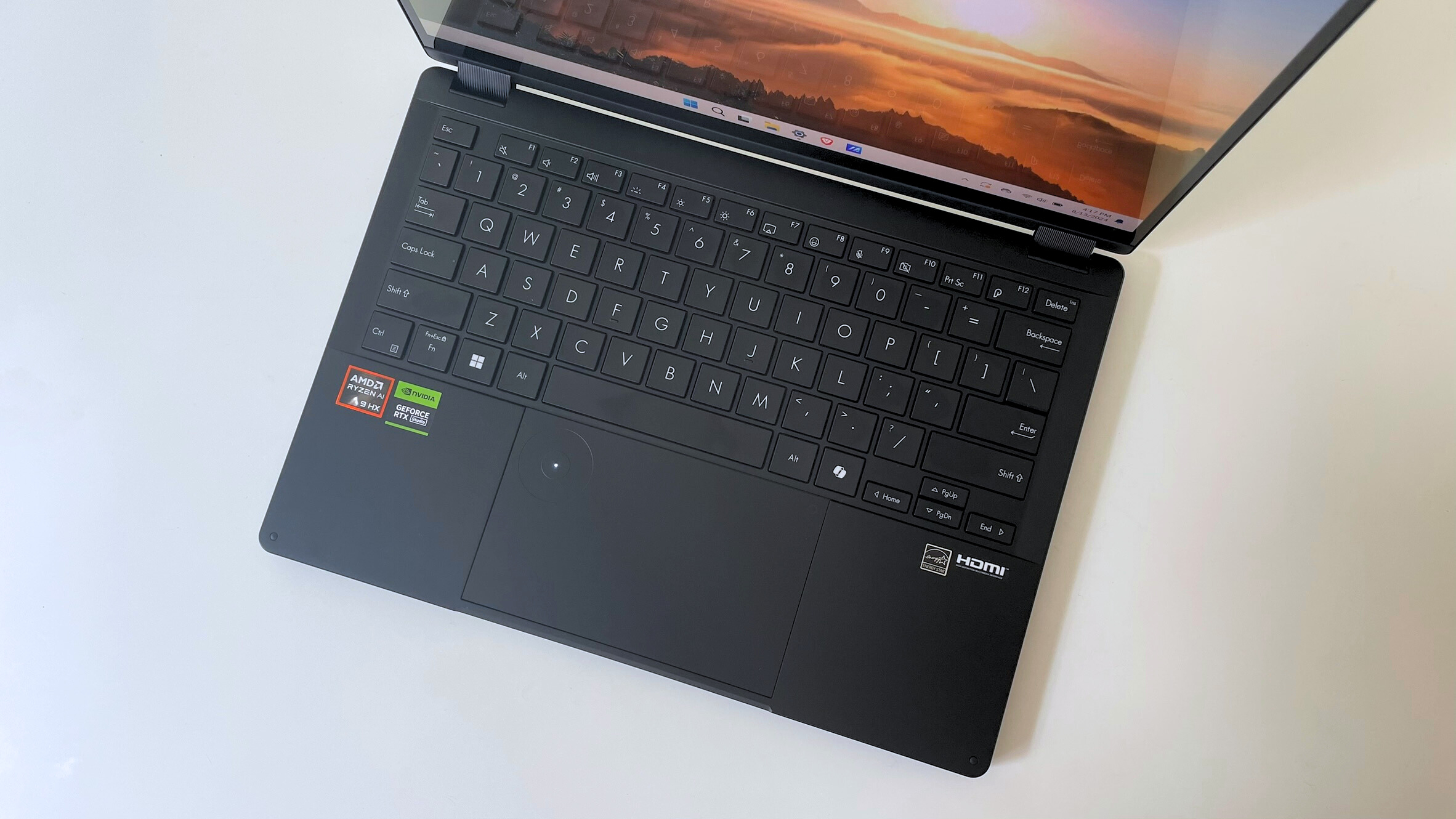
The ProArt PX13 is a compact laptop, but the keyboard and touchpad don’t feel cramped. The keys are large and well-spaced and feature moderate key travel and tactile feedback. It makes for a fast and comfy typing experience I thoroughly enjoyed.
On the Monkeytype typing test, I scored 104 words per minute with 98 percent accuracy on the PX13, which is way above my laptop average of 90 words per minute with 97 percent accuracy. It’s just shy of what I scored on the Lenovo Yoga Slim 7x, which currently holds the record for my fastest typing score (105 words per minute with 100 percent accuracy).
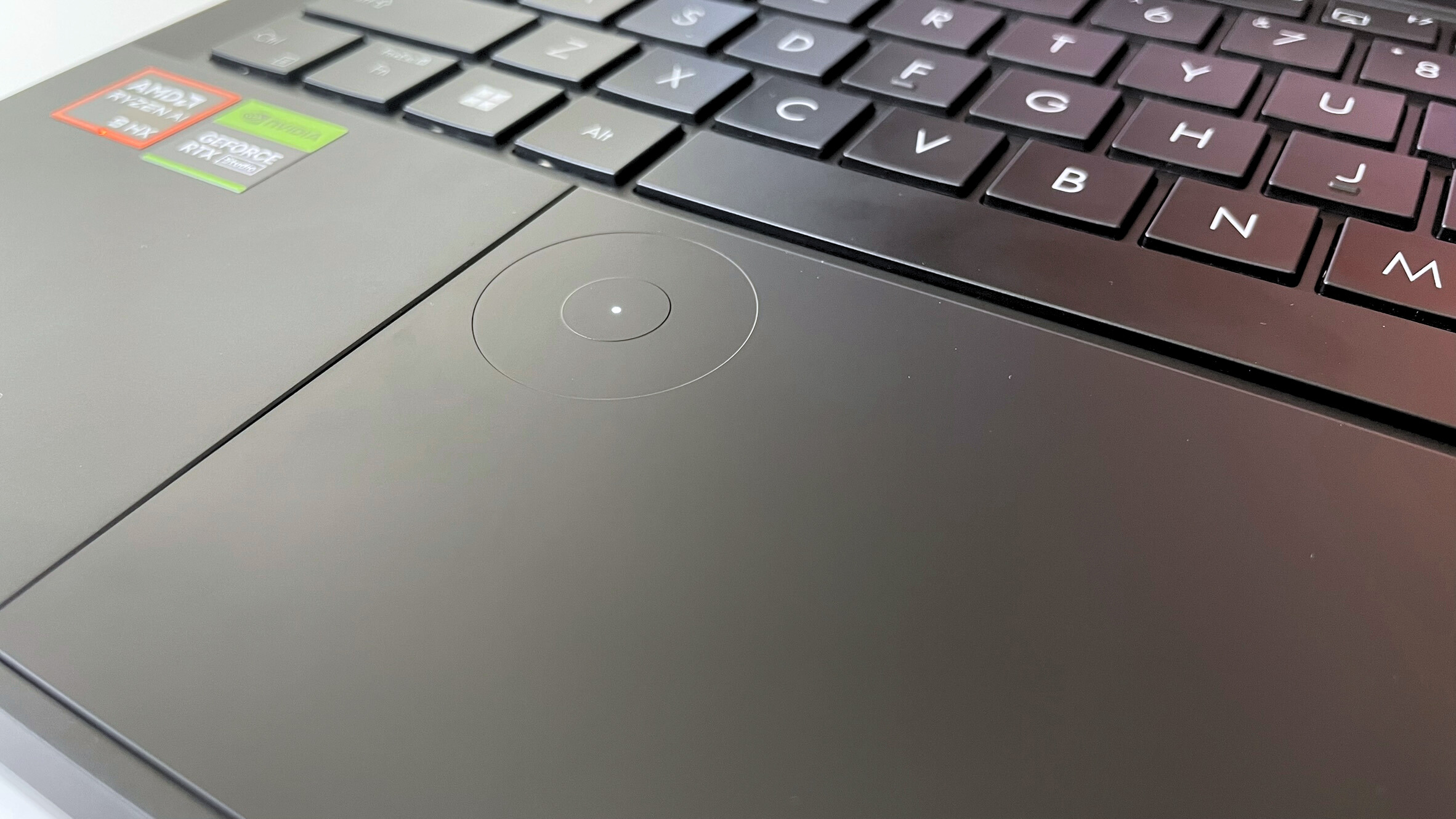
The touchpad on the PX13 has a matte finish and offers quiet, tactile feedback. It has a unique “DialPad” built-in that acts as a precision control wheel for use in apps like Adobe Photoshop or Premiere Pro.
You can also use the DialPad to quickly adjust screen brightness or volume directly from the touchpad. You can turn the DialPad on or off by tapping and sliding your finger diagonally from the top right corner of the touchpad (a small white LED will turn on or off to indicate when the DialPad is active). The Asus Dial and Control Panel app allows you to customize DialPad functions for different apps, much like setting up custom keybinds.
Asus ProArt PX13: Audio
The speakers on the ProArt PX13 get reasonably loud, but they’re bottom-firing, so they can easily get muffled if the laptop is sitting on your lap or a desk mat. I had to turn the volume up to around 60 percent to hear dialogue in episodes of Survivor clearly.
Luckily, there is a solution to the speakers getting muffled. Since the ProArt PX13 is a 2-in-1, you can flip the display around so the bottom of the keyboard deck is facing upward and the display is tilted at a good viewing angle. Now the speakers are effectively top-firing, making for a good movie-watching setup. You can also use this trick for gaming, assuming you have a Bluetooth controller available.
The ProArt PX13’s speakers have a fairly balanced sound profile with music, although the bass could be stronger. The indie rock tone of “Doing It Again Baby” by Girl In Red sounded punchy on the ProArt PX13 with crisp guitar notes and vocals. Similarly, the smooth mids and highs in “Softcore” by The Neighbourhood sounded good, but the bass could have been deeper.
Asus ProArt PX13: Gaming and graphics
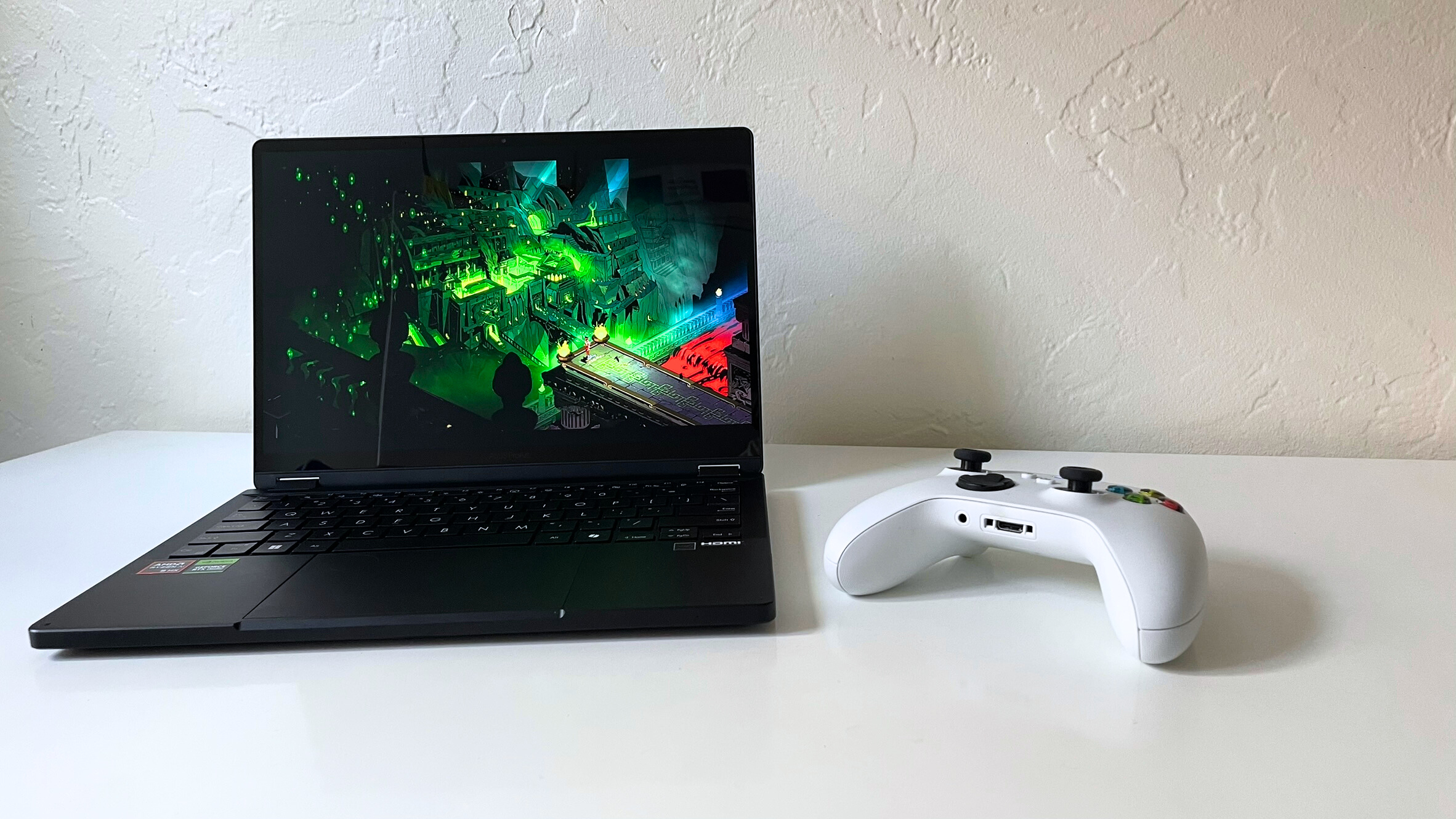
The Asus ProArt PX13 features an Nvidia GeForce RTX 4050 laptop GPU, so I had high expectations for its gaming performance. It didn’t let me down. It may not be a gaming laptop, but it can deliver fairly strong gaming performance.
The PX13 scored 18,634 on the 3DMark Fire Strike graphics benchmark and averaged 115 frames per second in Sid Meier’s Civilization VI: Gathering Storm. That’s slightly lower than what the Lenovo Yoga Pro 9i scored but far exceeds the Lenovo Yoga Slim 7x’s performance.
I ran the Assassin’s Creed: Valhalla benchmark test, which the PX13 handled fairly well. On Ultra High graphics, it averaged 36 fps with a max of 75 fps. The PX13 did better on the High graphics preset, averaging 44 fps with a max of 87 fps. That was spot on with the average frame rate I got during actual gameplay in Valhalla, as well.
I also played some Enshrouded and Hades on the PX13, both of which ran great. I averaged a full 60 fps in both games and didn’t experience any lag or graphics issues. Both looked vibrant and colorful on the PX13’s OLED display.
Asus ProArt PX13: Performance

As its name suggests, the ProArt PX13 is designed for creators with apps like Adobe Photoshop and Premiere Pro in mind. Creative apps can be resource-intensive, so you need strong performance benchmark scores to ensure a laptop can keep up. The ProArt PX13 showed impressive performance across the board.
It scored 2,847 in the Geekbench 6 single-core test and 15,203 in the multi-core test, far exceeding the Lenovo Yoga Pro 9i 16 Gen 9 and the Lenovo Yoga Slim 7x’s scores. The PX13 also had the best HandBrake time and the highest PugetBench Photoshop benchmark score. This one is important to note since it tests performance in one of the top creative apps in the world. Both Lenovo laptops scored fairly well, but neither could match the ProArt PX13’s score of 7,948.
During my week of testing, the ProArt PX13 ran fast and smoothly, handling everything from web browsing to gaming without any issues. The PX13 launches apps and games quickly, loads video content fast, and multi-tasks well. It offers plenty of performance for everyday tasks, including running creative apps like Adobe Photoshop.
Asus ProArt PX13: AI Performance
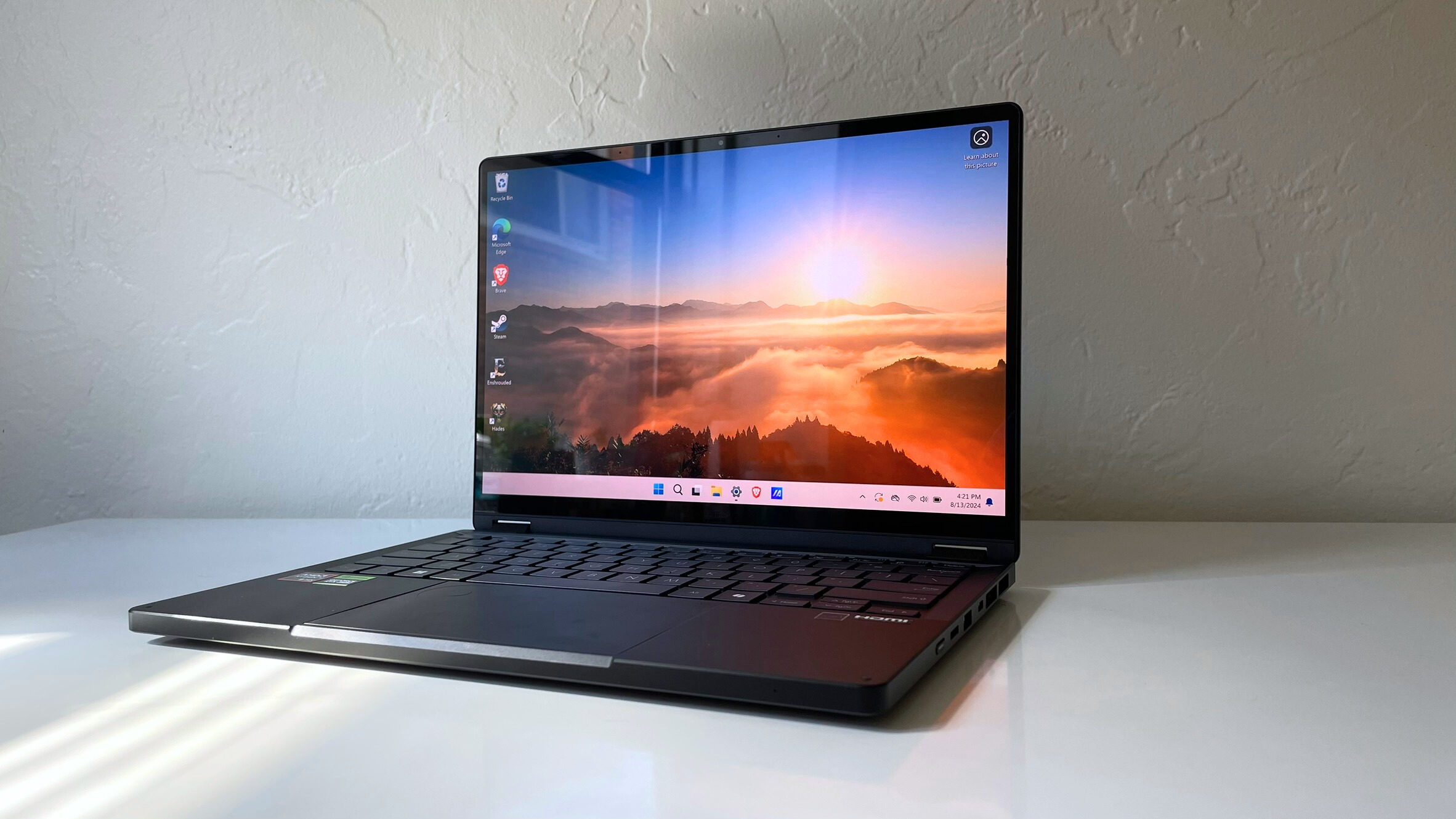
Like most new laptops launched in the past six months, the Asus ProArt PX13 is an AI PC which means it has a CPU that has a built-in neural processing unit. It’s powered by the AMD Ryzen AI 9 HX 370, one of AMD’s recently debuted AI chips.
So, how does this AMD-powered AI PC compare with its Intel and Snapdragon competitors? We ran a couple of benchmark tests that measure AI performance to find out. The ProArt PX13 had the highest score on the Geekbench ML CPU test, with a score of 3,587, far above the Lenovo Yoga Pro 9i 16 Gen 9 and the Lenovo Yoga Slim 7x.
However, the Yoga Pro 9i 16 Gen 9 took the lead in the Geekbench ML GPU test with a score of 11,228, a few hundred points higher than the PX13’s score of 10,914.
To put these scores into context, the Lenovo Yoga Pro 9i 16 Gen 9 is powered by an Intel Core Ultra 9 185H CPU and an Nvidia GeForce RTX 4050 GPU. The Lenovo Yoga Slim 7x is equipped with the Snapdragon X Elite X1E-78-100 CPU with integrated Qualcomm Adreno graphics.
That’s why the Yoga Slim 7x scored so much lower on the GPU test compared to the Yoga Pro 9i and the ProArt PX13 – it only includes integrated graphics, while its two competitors have dedicated GPUs.
The CPU scores are the most important to pay attention to because the ProArt PX13 and the Yoga Pro 9i have the same GPU, which is why their GPU scores are so similar.
The CPU scores show that the AMD Ryzen AI 9 HX 370 delivers the best AI performance, followed by the Qualcomm Snapdragon X Elite X1E-78-100 and, finally, the Intel Core Ultra 9 185H. A much larger gap shows between the AMD and Qualcomm chips than between Qualcomm and Intel in our benchmark results. So, if AI performance is your top priority, these test results indicate that a Ryzen AI 300 series CPU offers the best performance.
The AMD Ryzen AI 9 HX 370 delivers the best AI performance
The ProArt PX13 uses its NPU to run on-device AI features with Microsoft’s Copilot AI assistant and some preloaded apps from Asus. The ProArt Creator Hub app includes the MuseTree image generator and StoryCube, a tool that uses AI to help you organize your photos and videos by identifying faces, locations, and activities. You can also generate images locally with the Image Creator tool in Microsoft Paint or through prompts to Microsoft Copilot.
Asus ProArt PX13: Battery life
The Asus ProArt PX13 could have done better on our battery life test, but it could have done worse, too. It lasted 9 hours and 49 minutes, which falls about an hour short of the premium laptop average (10:39). That’s only a couple of minutes behind the Lenovo Yoga Pro 9i 16 Gen 9, though, and just barely long enough to get through a typical work day. The Lenovo Yoga Slim 7x far outpaced both rivals with a time of 14 hours and 13 minutes.
Asus ProArt PX13: Webcam
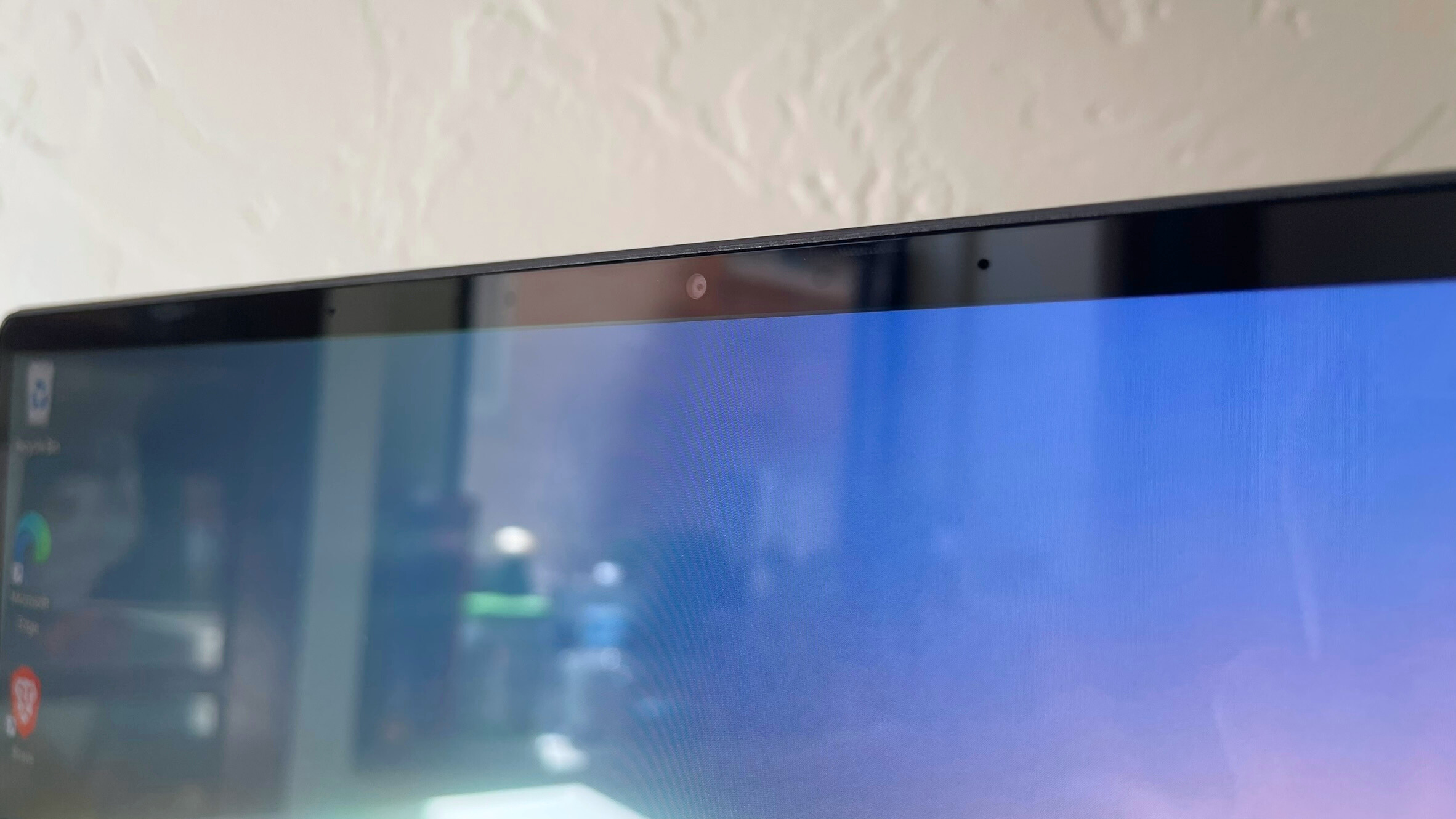
The built-in webcam and microphone on the ProArt PX13 are reasonably good and definitely adequate for everyday video calls. The video quality could be better. It’s slightly grainy but not excessively so. The microphone is surprisingly good, though. It captured my voice loud and clear and even managed to filter out the background noise from my AC.
There are buttons in the function row to mute your mic and disable the webcam, which I always appreciate for a bit of peace of mind whenever I’m not using my camera.
If you happen to need a higher-quality webcam, you can always add an external webcam to your setup.
Asus ProArt PX13: Heat
Any laptop designed for creative tasks like Photoshop or gaming needs to be able to dissipate heat well. The ProArt PX13 is up to the task but pushed the limits of our 95-degree comfort threshold in our heat tests. The touchpad peaked at 77.9 degrees, and the center of the keyboard deck reached 89.4 degrees. The highest temperature we recorded was 95.5 degrees along the rear edge of the underside of the keyboard deck.
The ProArt PX13 stayed fairly cool in my tests but got warm while charging and gaming, as one would expect. It never got so hot that it became uncomfortable, though.
Asus ProArt PX13: Software and warranty
The ProArt PX13 includes Asus’s standard one-year warranty for parts and labor. The ProArt PX13 is a premium laptop, so if you want some extra protection for it, you can upgrade your warranty through Asus Premium Care Plus.
The ProArt PX13 comes with Windows 11 Home with several standard apps pre-installed including Microsoft Edge, the Xbox app, and the Microsoft Store. It also has several Asus apps preloaded including ProArt Creator Hub, MyAsus, MuseTree, StoryCube, and CapCut.
Bottom line

The Asus ProArt PX13 is a top choice for creators looking for a compact laptop that can easily get the most out of demanding apps like Adobe Photoshop and Premiere Pro. While its battery life could be better, it scored superbly well in our performance, graphics, and AI benchmark tests. With its sharp OLED display and 2-in-1 design, the ProArt PX13 is the complete package for creatives.
The ProArt PX13 is especially well-suited for anyone looking to use their laptop for AI tasks like image generation or machine learning since the Ryzen AI 9 HX 370 CPU crushed our AI benchmark tests. The ProArt PX13 can even handle AAA gaming thanks to its Nvidia GeForce RTX 4050 graphics card.
The Asus ProArt PX13 is easy to recommend for creatives and professionals alike. If you want to compare it to some alternatives, see our guide to the best 2-in-1 laptops or the best laptops of the year. You can also use our laptop buying guide to help narrow down your options and find the perfect laptop for your needs.







